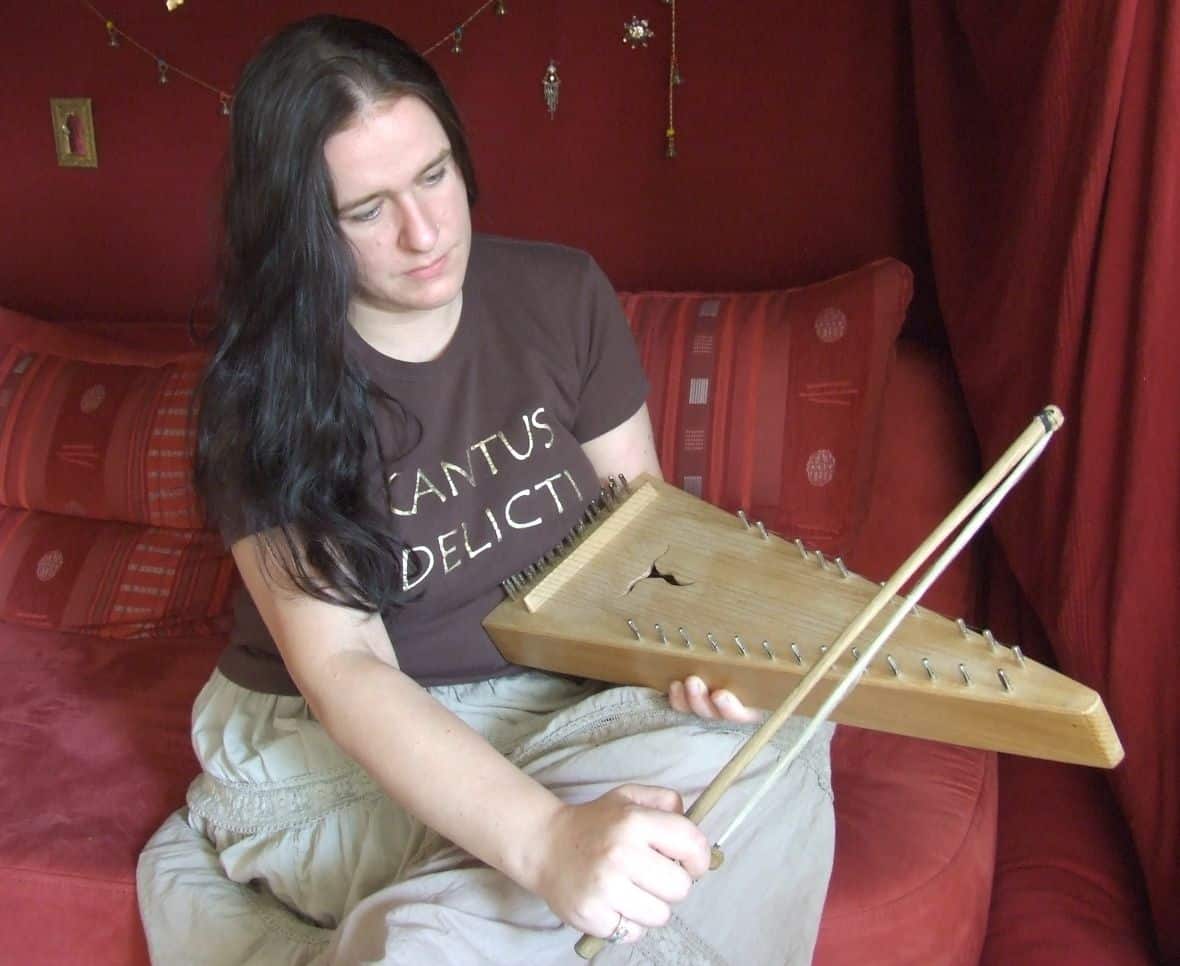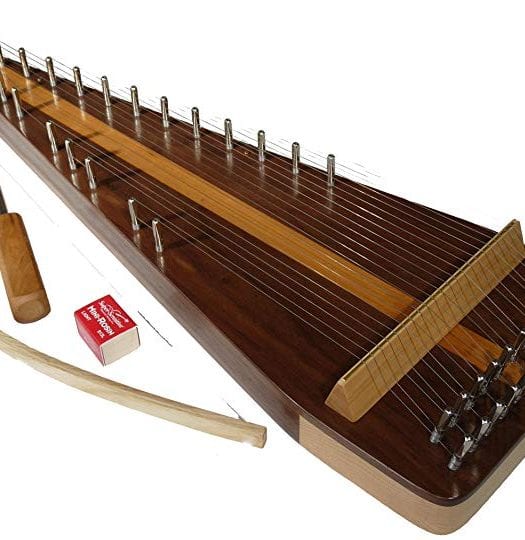What is a Bowed Psaltery?
As you can guess from its name, is a psaltery that’s played using a bow. Unlike psalteries of times gone by, bowed psalteries have only appeared since the 20th century.
The first patent for a bowed psaltery was in 1925 in Germany. This patent was issued to the Clemens Neuber Company and outlined a “violin zither.” This instrument was a bowed psaltery but it also had some strings that were arranged in chords that could be strummed while the melody was played on the psaltery strings with a bow.
How Do Bowed Psalteries Differ?
Bowed psalteries do differ significantly from those plucked in medieval times but only so that the string arrangement allows for bowing. In Europe, bowed psalteries use a bow similar to a modern violin bow but one that is reduced in size. In the US, the bows for bowed psalteries are semicircular, reflecting the earlier style.
Nowadays, a traditional bowed psaltery has a triangular shape which allows each of the strings to stretch further than the one it comes after. This means each string can be bowed individually. There are chromatic bowed psalteries and these have flats and sharps on one side with diatonic notes on the other side.
The diatonic bowed psaltery as an instrument is more harmonious than other bowed psalteries. Also, it’s somewhat similar to an old Irish harp. The strings on the diatonic version appear in a fan pattern in order to make bowing happen more fluidly with the movement of the human arm. These are also tuned to the white notes in the key of D, as the Irish harp is. This allows the instrument to have many playing combinations.
The diatonic bowed psaltery works well both with hammering and plucking too and suits a lot of different music such as early music, sacred music and folk music.
Why Would People Want to Play a Bowed Psaltery?
One of the great things about it is that anyone can play it. It’s an instrument that is pretty quick to master because it’s really easy to play a bowed psaltery by ear. It’s a melody instrument that has a really clear sound, so it’s suited to lots of music genres, for example: kids songs, folk songs, Celtic songs and gospel songs.
Another great aspect is that they usually only need tuning once every six to twelve months. Nowadays, tuning instruments is much more simple and there are tons of videos online to help you, as well as many tuning instruments.
What Makes a Good Bowed Psaltery?
You want to choose a bowed psaltery that produces a great sound but is also comfortable to hold. You can get psalteries that can be played in a variety of positions too.
For a beginner, a good bowed psaltery will have a simple design that makes it easier to learn and to tune. A complex design will also be complex to play and tune, so it’s more suited to an experienced player.
If you’d like to learn more, check out our detailed review on the best psaltery.




